The Konica Hexar RF was pretty much the last analogue m-mount rangefinder I hadn’t shot with, and one of only a couple I hadn’t reviewed. It’s a camera I have been recommended a fair few times over the years I’ve been running this blog. But with it being entirely battery dependent and therefore often unfixable when it fails, I’ve been fairly hesitant to put my money down. Recently though, the opportunity came up to buy one, and at a price and in a condition that gave me enough comfort to take a punt. And I’m glad I did!
The Konica Hexar RF is also one of the only film camera purchases that I’ve made in a long time that comes from a place other than pure intrigue. I sold my Leica M7 a couple of years ago and have missed the automation once in a while since. It’s a camera sale that I sort of regret, and I don’t often regret selling cameras. The Konica Hexar RF has since then struck me as an obvious alternative. It’s cheaper for one, and it takes automation to another level. As such, buying it, I actually felt like it might provide me with a useful set of features.
As I say, I never buy film cameras with this sort of motivation these days. I never expect or hope a camera will bring something to my photography, I just buy cameras for the shear experience of shooting them and the joy I have in writing about them. The Konica Hexar RF purchase was different. Whenever I had reason to regret the sale of my M7, I would look up the Konica Hexar RF online and get pangs of what I’d call “delusional gear acquisition syndrome”. Most people will have experienced this I’m sure, it’s that type of GAS that comes from a place of thinking a particular bit of kit will actually help your photography in some way.
As such, the purchase of the Konica Hexar RF, and indeed the experience of ownership has been a little more loaded with expectations and desires that I’ve not had in a while. I really wanted to like the Konica Hexar RF! Now I’ve got it, despite a few early concerns that I’ve now largely overcome, I do indeed really like it – though owning the thing doesn’t come without worry…
Caveat Emptor
My Konica Hexar RF came to me from a French photographer who hadn’t used it a great deal since he bought it new. It shows too – it’s not in mint condition – but it’s not far off. There’s two schools of thought when it comes to buying used cameras like this. On one hand an argument can be made for buying the cleanest least used camera you can find in the hope it will last longer. On the other hand, like anything with moving parts, there is a risk in not using it. A camera that sits unused for years is in danger of ceasing up, and then catastrophically failing after only a short amount of use.
This risk is of course magnified when buying a camera like the Konica Hexar RF. These cameras sit firmly on the list of those prone to irreparably fail. Manufacturer support has long ended, parts are unavailable, and there are very few repair companies that will look at them – at least that I know of. In short, buying one of these cameras carries with it a much better chance of heart break than buying a mechanical film camera.
I recently wrote a post about all this that, for a large part at least, focused on the ludicrously overvalued compact cameras such as the Contax T2. I also mentioned the Hasselblad Xpan in that post as a being a risky purchase. Fortunately, the value of the Konica Hexar hasn’t skyrocketed to such a degree as those cameras – and I really hope it doesn’t too! For all the praise that I’m about to bestow on it, the £5-600 they go for now really is plenty enough money to spend on a camera that could irreparably fail at any moment. If you see one for more than that, my advice would be be to read my post again, and think long and hard about if you’re willing to lose that money if it fails!
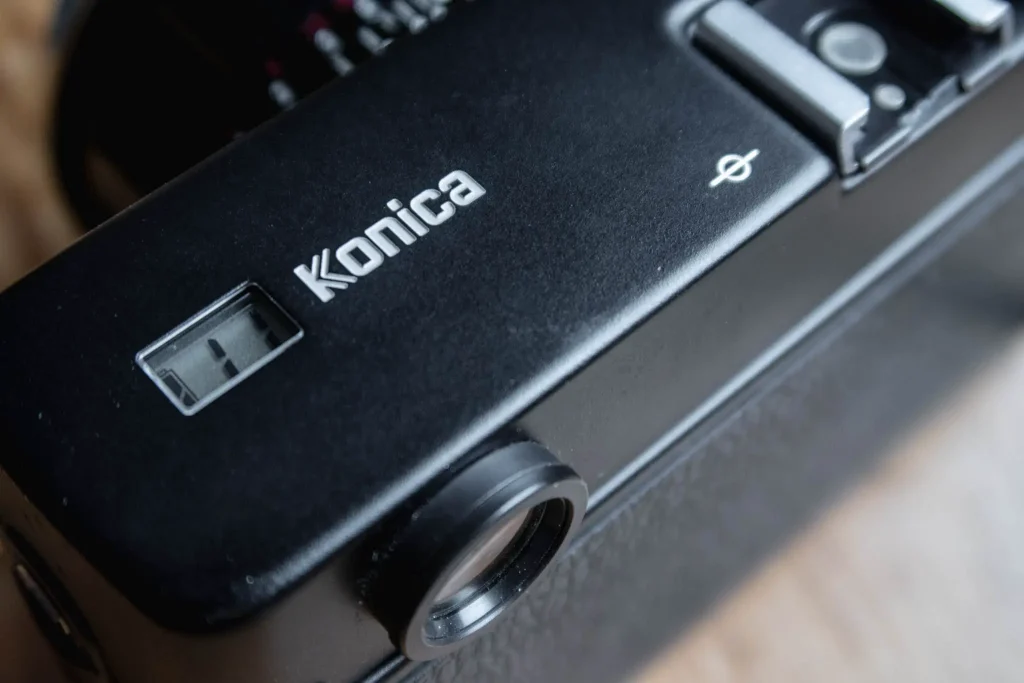
My Konica Hexar RF Concerns
Even without the worries about failure, as I’ve already alluded to, buying this camera did come with one key concern. I also discovered another one when the camera landed with me, though I will come to that in a moment.
Viewfinder/Rangefinder worries
The key concerns I had with the Konica Hexar RF prior to owning it were all to do with the viewfinder. If you asked me to honestly tell you why I prefer Leica rangefinders to any other rangefinder camera, the first thing I would mention is the viewfinders. I’ve shot a lot of rangefinder cameras over the last 5-6 years, and I am yet to find one with a viewfinder that works for me as well as the Leica viewfinder.
I’m not saying they’re the best, but they are the best for me. Whilst the likes of the Zeiss ZM has advantages over Leica in terms of the size of the finder, the rangefinder patch didn’t quite suit me. The Voigtlander cameras the same – very good, but just not quite as accurate as a Leica M rangefinder. Many other rangefinders don’t even come close enough to bother mentioning – not in my opinion anyway. Which is why I was worried about the Konica Hexar RF, especially having read a fair bit about it online…
If you read elsewhere online about the Konica Hexar RF you will learn that the viewfinder magnification is lower, the brightness of the viewfinder not as high and the rangefinder patch not as big. I’d also read, at least once, about the rangefinder patch not being perfect when not looking straight through the finder. All of this sort of thing worried me, I’ve built up quite a lot of familiarity with my Leica M3 and M4-P now and didn’t want to not like the Hexar RF just because it was different. In practice, as I’ll come to, I had little to worry about.
The Konica Hexar RF in use
With those concerns in mind, the first lens I mounted on to the Hexar RF was a Voigtlander 50mm f/2.5. I figured that a slower lens would be less likely to cause me focusing issues than a faster one. Unfortunately, mounting this slower lens revealed the first thing that really bothered me about this camera in use.
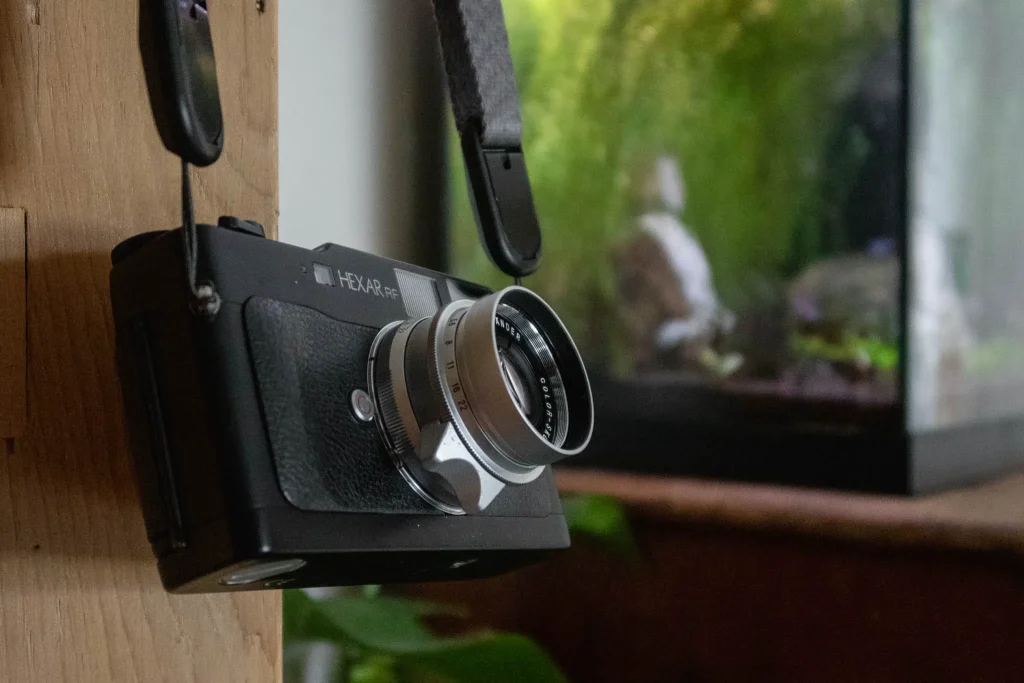
The Voigtlander 50mm 2.5 is not that light a lens, but it’s light enough that when mounted, and the camera is hung off a strap, the camera has a tendency to look up at you, and so doesn’t sit comfortably when being carried. The strap lugs are just too far forward on the camera body for it to balance right. This isn’t a big deal really, but I think there was a part of me that was actively seeking to find issues with the Hexar RF when I first got it. I suspect this came down to the fact that I’d have been more comfortable not liking it given my concerns about it breaking. Finding a distaste for it would have allowed me to part with it easier…
Finding love
I then went out with it on a couple of occasions with the family in tow, and loved it! I even found myself getting over the lens balance issue. Primarily, this was due to a realisation that the lens being light was only half the “issue” – the other half was the weight of the camera. Now, as someone who likes small light cameras, you might expect me to moan about a heavy camera. In the case of the Hexar RF, the heft of it feels perfect. It might not hang right on a strap, but it feels spot on in the hand.
Oddly, it took me a little while to twig as to why it would feel this way. I then realised it’s essentially the same weight and size as a Leica M film camera. I like it, because feels very similar to what I’m so used to – at least in terms of the weight and size…
Really, it’s no Leica
Of course, in use, in almost every other way, it feels like a departure from a Leica – and how different it is felt entirely apparent on the first outing.
I actually loaded it with film maybe a week before I took it out. Like most m-mount rangefinder cameras – that weren’t make by Leica – it has a swing open back that allows the film to be loaded is seconds without any fiddling at all. I rarely find myself bothered by the task of loading a Leica, but I definitely notice when the task is simplified to the point of dropping the film in and closing the back. First time, and every time since, the Konica Hexar RF has grabbed the sprocket holes and loaded itself without a moment of hesitation.
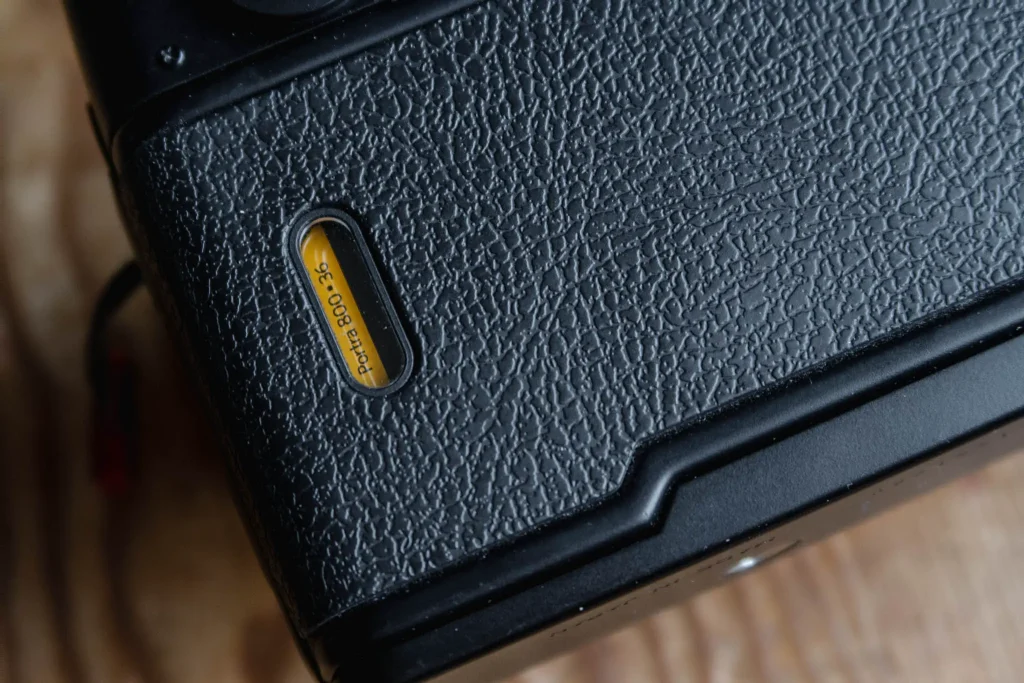
A week later I picked up the camera and couldn’t remember the film I’d loaded into it. No problem, it has a window on the back so I could see the film. I don’t find this an issue with my Leicas, as I have a system. Not needing to have a system works better… who’d a thunk?!
Taking the first photos
My first meaningful outing with the Konica Hexar RF was with the kids to a Thomas the Tank Engine day out. I quickly got a feel for the meter as having a centre-weighted pattern and got on with shooting. I bought the camera with a desire to use its automatic exposure modes, so pretty much from day one that’s been my approach to using this camera.
The AEL mode
The Konica Hexar RF has two automatic modes labelled on the shutter AE for autoexposure and AEL for autoexposure lock – AEL locks the exposure on half-press of the shutter, AE doesn’t. With either mode, the shutter speed is displayed in the viewfinder down the left hand side. In manual mode, the selected speed is illuminated and the speed the camera thinks you need flashes. For the way I shoot it, AEL suits me perfectly – I’ll stick to my Leicas for manual shooting.
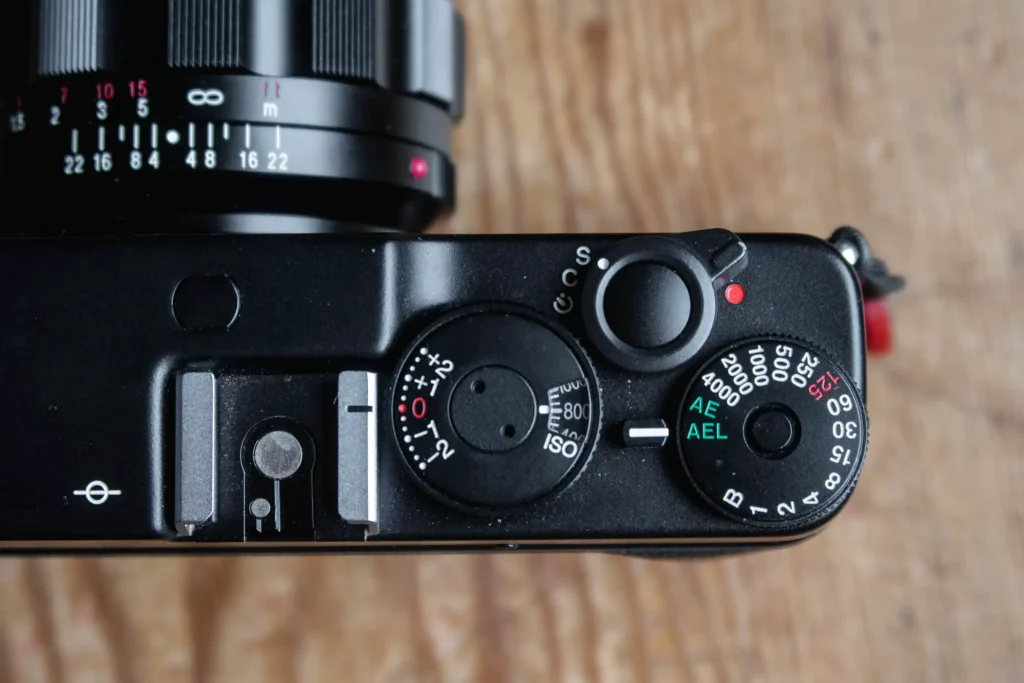
Centre weighted meters like this are fairly trustworthy when it comes to point & shoot exposures, but I find the AEL mode just brings that added bit of confidence. My approach to shooting it is similar to that I had with my Leica M7. I actually find it slightly easier to get good exposures with the Hexar RF than I did with the M7, though it’s probably quite important to quantify that by pointing out that the added experience I’ve had since then is probably a part of this.
With my M7 I often used to use the centre-weighted meter to assess the whole frame – it would be perfectly viable to do that with this camera to, though these days I just have a better idea of what to meter from to get the exposure that I want. As such, I just point the camera loosely in the direction of my subject, maybe move the camera around a bit to get shutter speed reading that feels the most appropriate, lock the exposure with a half-press of the shutter button, and take the shot.
The viewfinder
It was also on this first outing that I started to become familiar with the viewfinder and its various reported shortcomings. I’d had quite low expectations, but actually I was quite pleasantly surprised in practice. It’s right to say that it’s not quite as bright as the best of the Leica finders – but really, there’s very little in it. The only thing I really noticed when I picked up the Konica Hexar RF was the size of the rangefinder patch. It’s smaller than what I’m used to and has rounded corners that made it feel a little alien. My gut response was quite negative, but actually as a regular rangefinder photographer, I quite quickly got used to it without even really thinking about it.
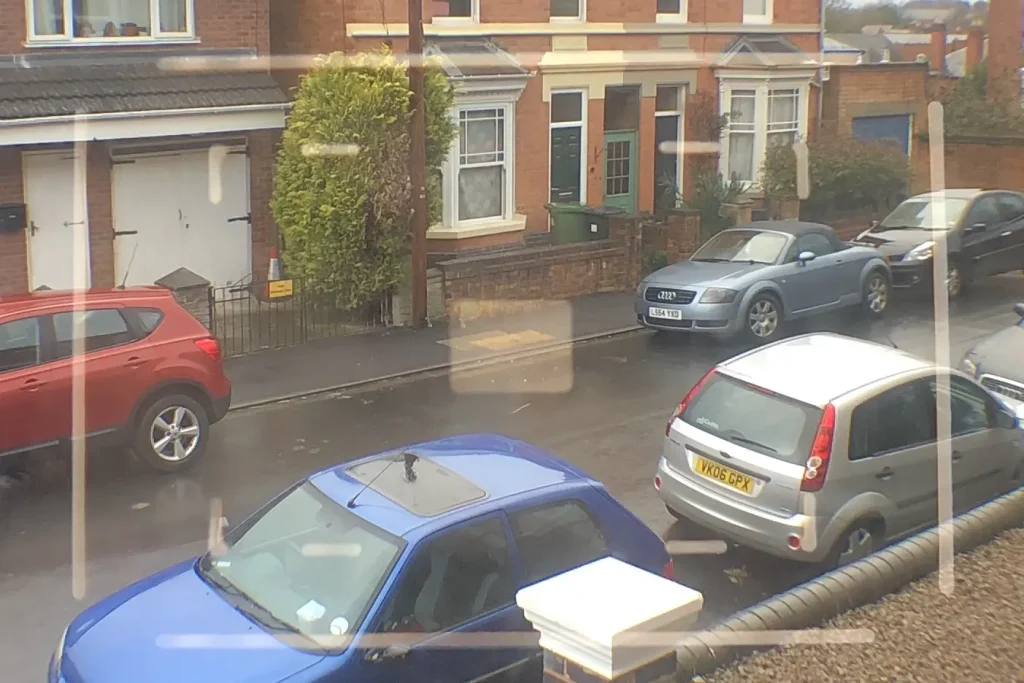
Patch oddness
That said, I was still left with the concerns about this idea that the rangefinder patch wasn’t completely reliable unless it’s looked at straight through the viewfinder. Shooting it to begin with, I couldn’t detect the issue, so became a little uncertain about if I was focusing accurately. Fortunately, the Hexar RF was to soon demonstrate the issue to me in a way that left me feeling a lot more comfortable with it.
Sat on a bench seat in a small gauge train carriage I decided I wanted to take a shot of Connie with a little steam train out of the window behind her. The carriage was quite packed so I didn’t have much room to manoeuvre without barging people. As such, I had to turn myself around in my seat and hold the camera at a slightly unnatural position to my eye. As I did this I got the sense that the rangefinder patch wasn’t quite doing what it was supposed to. I could make the images line up, but somehow the patch didn’t have the same clarity to it. I sort of shuffled a bit to get the camera straighter to my eye and almost like elastic releasing from tension, it popped back to its normal clarity. I took the shot, and ultimately it came out correctly focused.
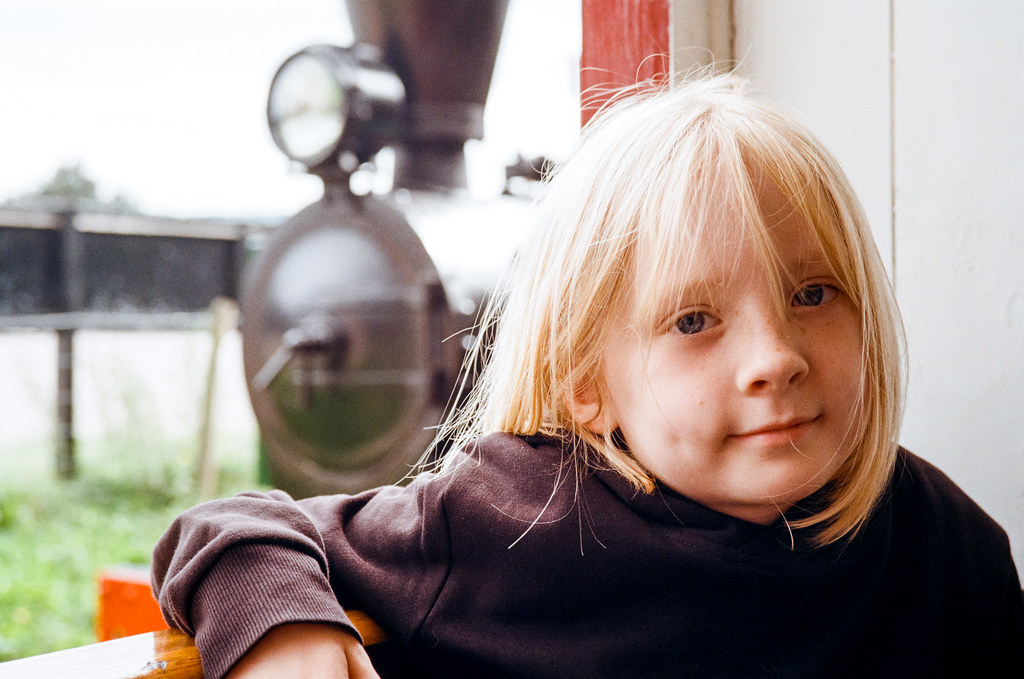
A later experimented with this issue and found that it’s true that if your eye isn’t lined up to the finder properly the rangefinder can give what appears to be a false reading. When it’s doing this though, firstly it’s easy to detect because it just doesn’t quite look right, and secondly it only takes a slight adjustment of the angle of the eyepiece for it to pop back to being right. It’s quite hard to explain, but it really does feel like its obviously out of whack when it is, as when lines up properly the patch really pops into focus in the finder.
As someone who has to use their left eye to focus – something that still doesn’t feel quite natural – finding all this not to be a meaningful issue was quite a relief. I’m quite sensitive to this sort of thing not working for me – the Zeiss ZM being a good example of a camera that would have been much better suited to me if I’d been able to get on with the rangefinder patch a bit better – yet here, I don’t really find a problem. Your mileage may of course vary – it’s definitely not a sweet as a Leica rangefinder patch, but it’s close enough for me.
Finding balance
Having found comfort with the rangefinder and viewfinder, the only slight issue that remained was the balance of the camera. As I’ve said, it felt great in the hand, but I couldn’t help but find the way it hung off the strap to irritate me once in a while.
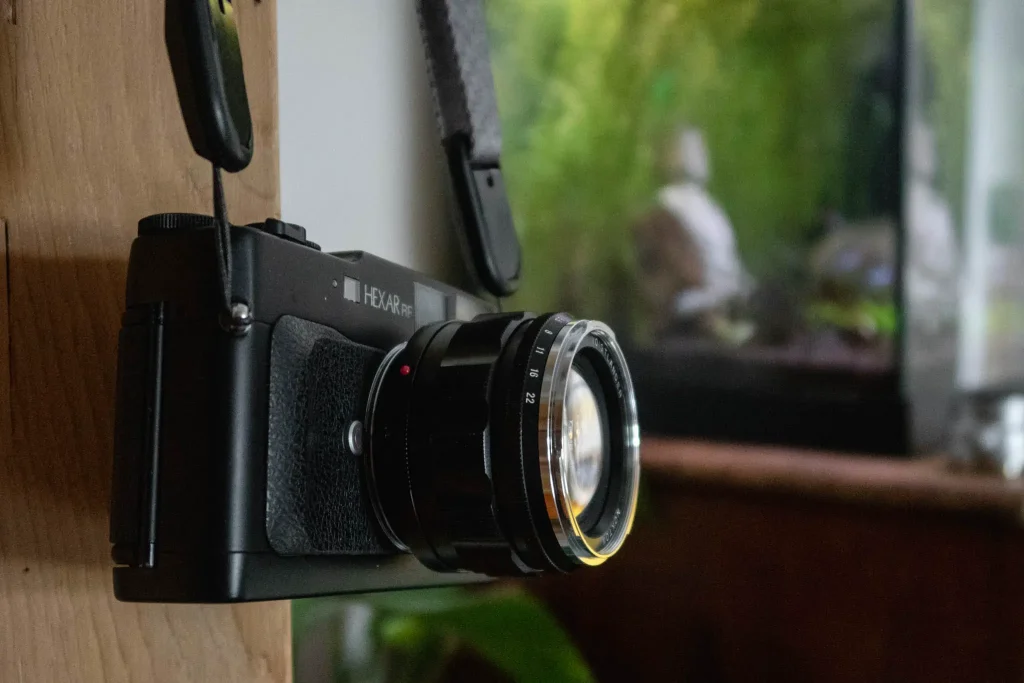
Then the Voigtlander 50mm f/1.2 lens landed in my possession. At first I didn’t think to mount it on the Konica Hexar RF – I expected the low magnification of the viewfinder would let me down. But going out for a morning of photography training with a new employee at work I decided I wanted to shoot the roll of Portra 800 I had loaded in the Hexar RF with the Voigtlander lens. Mounting lens to camera was a revelation. As I talked about in a short precursor to this review, the combination of camera, lens and film just felt fantastic to me.
To start with, this was because the balance of the camera and lens was spot on both hanging on a strap and in the hand. But later – having taken some shots wide open just to test it – it turned out that the lower magnification viewfinder and smaller rangefinder patch didn’t let me down, even when shooting with such a fast lens!
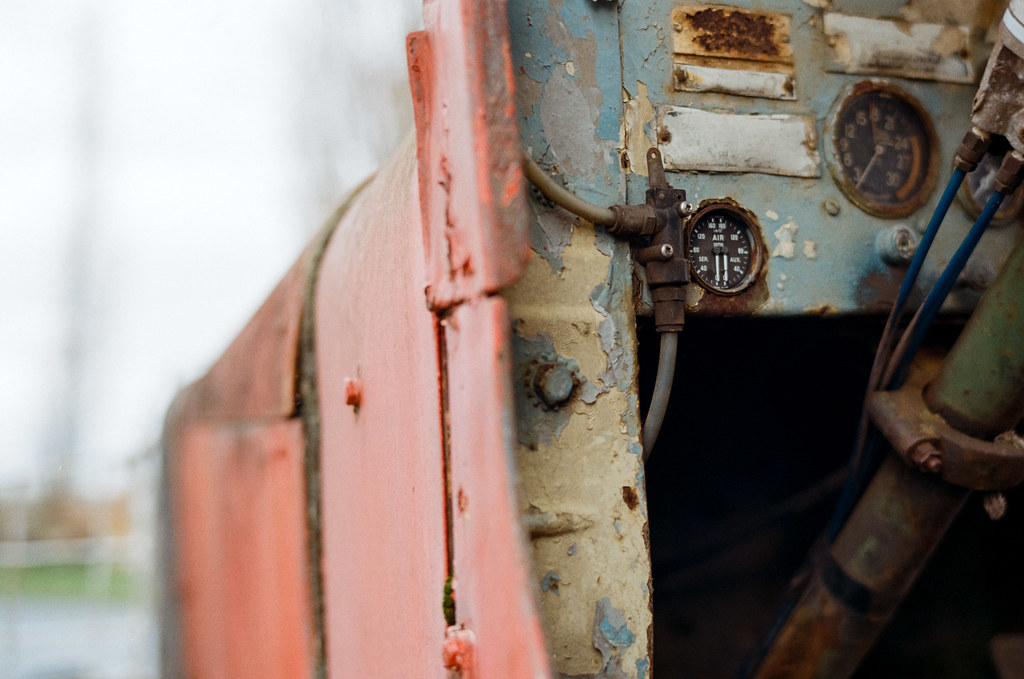
Compensation
This realisation then encouraged me to take the Konica Hexar RF on a night out with some friends – for my birthday, in fact. I had a couple of motivations: I wanted to underexpose Portra 800 in low light and I wanted to further see how I would get on with the Voigtlander 50mm.
I took this first shot in a very dark corner of a bar. He’s alright my mate Tom, he knows to sit still whilst I faff about. I must admit finding focus in such low light was a little bit of a faff, but I’m not sure many manual focus cameras could have improved the situation for me that much. I’d love to tell you exactly how I exposed, but in all honesty, I can’t really remember. I think it was 2 stops under. Either way, finding and being confident with the exposure I wanted was less of a faff.
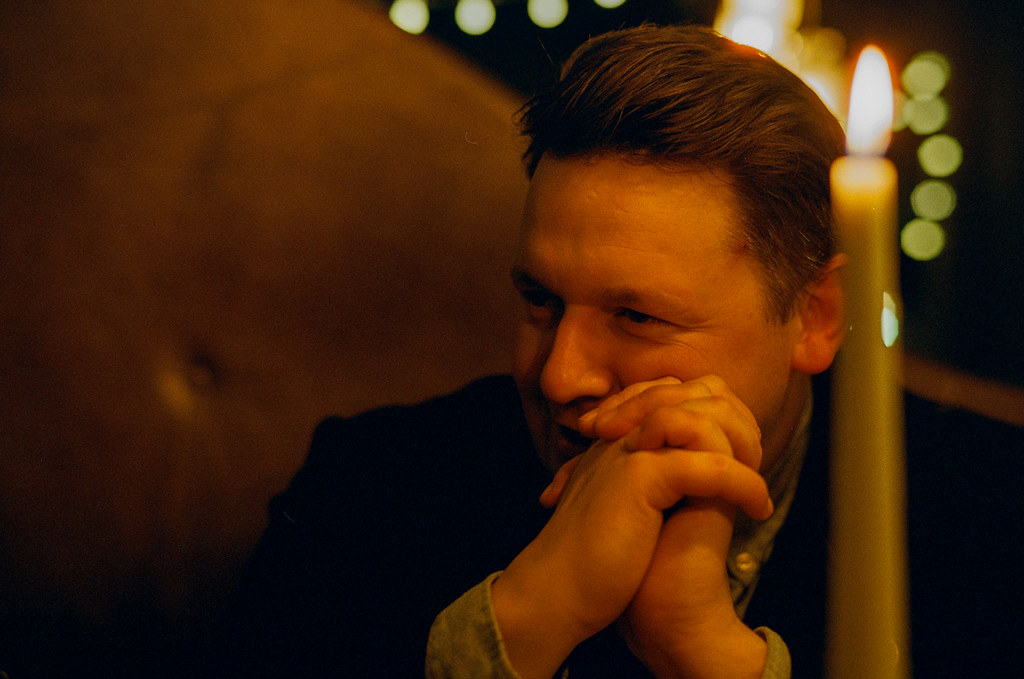
Dual dials
My usual approach to low light film photography is a lot more lackadaisical – especially when I out for a few drinks. I quite often use HP5 and just shoot at the widest aperture and 1/60th of a second and just hope for the best. On this occasion I was more interested in metering properly as I wanted to see how the film would respond to intentional underexposure.
The Konica Hexar RF, much like the Voigtlander series or Rangefinders, Zeiss Ikon ZM and Minolta CLE has a dial that combines the ability to set your exposure index and exposure compensation. The difference between all those cameras and the Hexar RF is that the Hexar dial is separate to the shutter speed dial. As I’ll come to in a second, this has advantages and disadvantages – but I ultimately find it to be a preference. On this particular occasion, with the exposure index set to 800 I set the exposure compensation dial, took a bit of care not to allow the near candle to influence the exposure too much and took the shot.
In the next bar I remember tweaking the exposure compensation a couple more times, though again I can’t really remember what I set it too. My goal was to underexpose slightly rather than use the lens at its widest aperture. Portra 800 seems to be fairly responsive to such techniques, and looking at the negs, the combination of whatever I was doing and how well the camera was working for me resulted in fairly consistent exposures. The only frame that was a little more underexposed than I expect I was aiming for was this next one. But with some careful scanning, I still got an image I quite like.
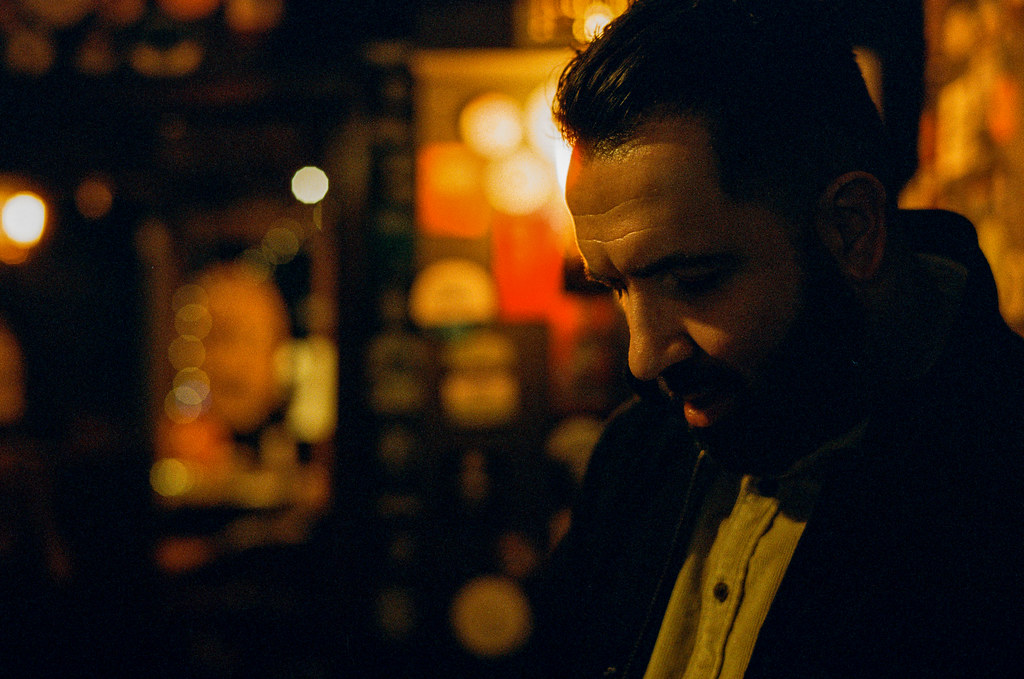
Separate dials – pros and cons
The primary advantage of the exposure compensation/exposure index dial being separate to the shutter speed dial is the ability to set a preferential setting then be able to switch to a manual shutter speed and have those settings reflected in the light meter readout. The settings also remain when you switch back to auto. Of course, therein lies the disadvantage – at least to someone relatively new to the camera – as I discovered on a recent outing with some friends.
The below photo was underexposed by a stop, not intentionally, but simply because I forgot to set or check the dial. I’d been playing with the camera the night before, had set the camera to underexpose, but in the end had decided to use my digital instead. When I got up the next day I picked up the Konica Hexar RF, took it out and shot a few frames before thinking the shutter speeds it was telling me seemed a little fast. Only then did I check the dial. To be honest, I guess this could have happened with a Ikon ZM too, but I remember blaming the dual dials on the day… a bad workman, and all that…
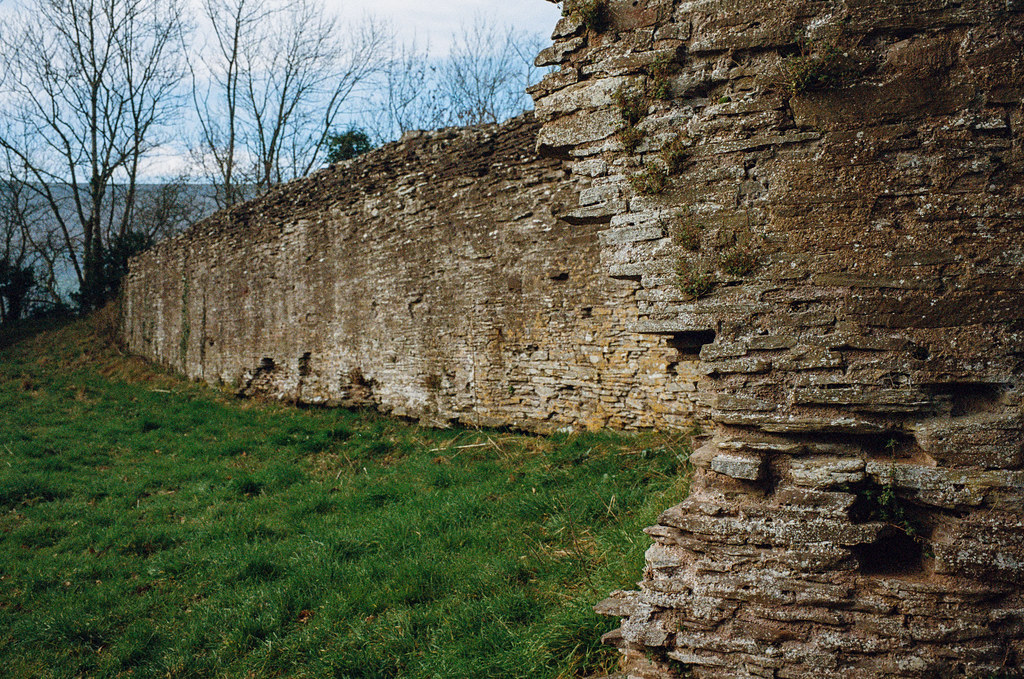
Frame lines
It was also on this outing that I found the final thing I want to talk about as part of this review. I am almost exclusively a 50mm lens photographer. I have other lenses, but I rarely shoot them. Just before going on holiday though, I received a Zeiss 35mm f/1.4. With it being on loan from Zeiss, I only have it for a few weeks, I decided I didn’t want to throw away the chance to shoot it by taking the temptation of a 50mm lens on holiday with me. So I took the 35mm and an old 90mm Voigtlander.
I’ve not shot 35mm for a while and so find it a little unnatural. But since the magnification of the finder in the Konica Hexar RF is lower, the 35mm frame lines are a little smaller in the viewfinder. This gave me the extra space around them that I enjoy so much shooting 50mm lenses on a rangefinder. In fact, unlike Leica rangefinders, there is even a little bit of space around the 28mm lines.
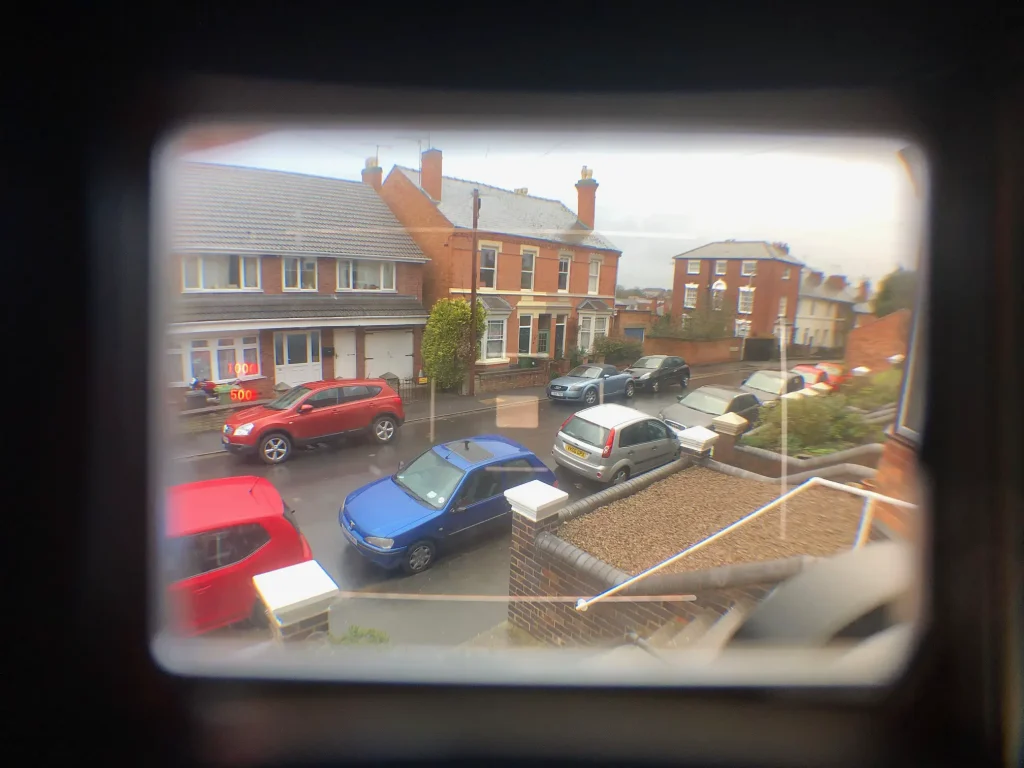
Of course, whilst this is an advantage with wider-angle lenses, it’s a different story with longer lenses. Mounting the 90mm brings up a fairly small set of lines – though I still managed to get a couple of shots with the 90mm that I was happy with.
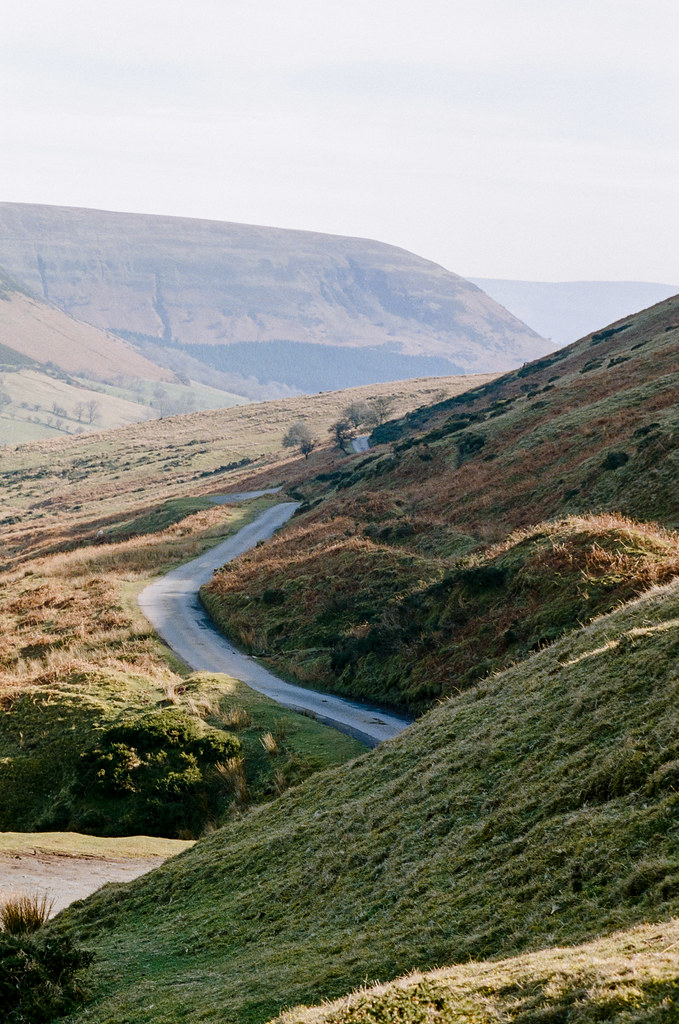
The comparison trap
When I first started writing this review I found myself falling into the comparison trap. In fact, I got so bogged down in it that I ended up moaning to my patrons on my Patreon mini-blog about it. Thankfully, they shared some sage advice which resulted in me deleting almost everything I’d written and starting the review again.
I have of course made a few comparisons in this review, but the reason I kept falling over when I went down the road of just making direct comparisons to other m-mount cameras I’ve used is that the Konica Hexar RF is one that really stands out to me as being apart from the herd.
That being said, I think there’s a danger in saying this camera is better than others, or even that I prefer it. In reality, the Konica Hexar RF just works very well for me at this moment in my photography journey. I look back at my Zeiss ZM review and almost cringe at how negative I was about it. In hindsight I realise, this was because it didn’t quite measure up the the Leica M7 I’d recently gotten very used to, but had decided to sell ie it wasn’t as good as something I didn’t want. I was also at a point in my photography where I felt I was learning to expose properly with a meter-less camera, so it just wasn’t the right time for me to be shooting it.
A couple of years later and I’d once again begun to crave shooting a camera with a built in meter. I’ve started experimenting with other films outside of the default Portra 400 and HP5 I was shooting back then, and as such, wanted to have a greater sense of reliably nailing exposure to give me the ability to better judge the response of the film. This is of course perfectly possible with a camera without a meter, but slightly easier with one.
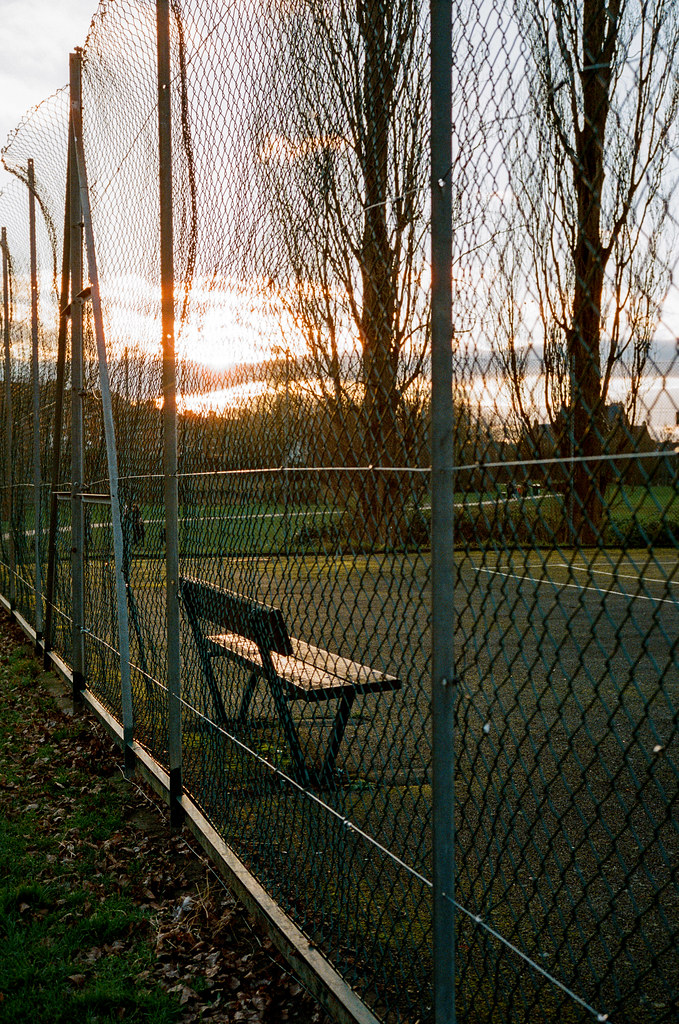
I’ve also almost forgotten the approach I took when shooting the M7 – or at least the muscle memory has faded – so my approach to the Hexar RF hasn’t been tainted or swayed by the love I had for that previous experience. In other words, I’ve started shooting it with a cleaner slate, and have found myself able to key into the way it works very easily.
Is it better than the M7? I dunno! This is one of those questions camera reviewers love to hang their opinions on. As that narrative usually goes, Leica locked themselves into a fair few design ideals when they moved away from the “failure” of the M5. By the time the M7 came along, years had passed since Konica Hexar RF and the Minolta CLE had showed the world what an automated m-mount camera could be like. Yet despite this, in many ways, Leica stuck to the mould and didn’t introduce many of the innovations Minolta and Konica had brought to the table. Instead they chose to only fairly subtly add automation to their classic design. Many people sneer at Leica for this, saying it was a sign they were stuck in the past. Personally, I have always respected Leica more for the occasions they’ve stuck to what they do best – keeping cameras feature-light and quality-high.
The Konica Hexar RF is a more “advanced” camera than the Leica M7 – there’s no doubting that. But it doesn’t make it a better camera, it just means it’s different. It’s even more different than the M4-P and M3 I otherwise shoot too. But for me, that’s the exact reason I’m currently enjoying the Hexar RF so much. I only hope it doesn’t die on me now…
Share this post:









Comments
Paul on Konica Hexar RF Review – A Meandering Insight into my Experiences so far
Comment posted: 04/03/2019
Stephen Malagodi on Konica Hexar RF Review – A Meandering Insight into my Experiences so far
Comment posted: 04/03/2019
Comment posted: 04/03/2019
Craig Schroeder on Konica Hexar RF Review – A Meandering Insight into my Experiences so far
Comment posted: 04/03/2019
Comment posted: 04/03/2019
JamesW on Konica Hexar RF Review – A Meandering Insight into my Experiences so far
Comment posted: 04/03/2019
Does it do for you what you want it to do for you? Then enjoy it/yourself. One day all things will fail, until such a time surely the best thing to do is to make the most of now....
I have a Contax G2, and several lenses. The camera WILL fail at some point. Oh well. Until such a time I'm gonna enjoy it.
Comment posted: 04/03/2019
L. Tao on Konica Hexar RF Review – A Meandering Insight into my Experiences so far
Comment posted: 04/03/2019
I also had the comparison trap between this and the M7, but ultimately, the 1/4000s shutter was just a lot more useful to me than TTL flash and mechanical winding, esp with a fast lens.
Comment posted: 04/03/2019
françois karm on Konica Hexar RF Review – A Meandering Insight into my Experiences so far
Comment posted: 07/03/2019
The digital cataclysmic has generated an extinction of most of the non mechanical cameras.
The lack of support for the few brand who survived, combined with the fading of knowledgeable micro electronic technicians, is a death sentence for 99% of the late XX century 35mm camera.
Only the Paleolithic ones, purely mechanical will have a longer lifespan, due to stronger mechanisms and in this group, Leica, the initial leader, will insolently keep the flag, thanks for the million customers base they initially had with their LTM mount and M mount.
35MMC is doing a very interesting and important historical work.
Listening to the old warriors, before they became silent.
the Hexar is one of this super nice one.
There will be no reborn before the death of all theses brilliant pieces of engineering.
All GR, Hexar, MINOX, Contax has to become bricks.
In this graveyard the Leica MP/MA are the last samurai.
Somebody in an office in Wetzlar decided to keep alife the Film line up to 25 years after the last one will be sold.
Kudos.
When the hexar was put on the market it was an interesting outsider of Leica M.
Today, the battle is gone...
We all dream about it, in the 90' comparing its advanced functions with what the leader has to offer....
Laughing about the dynosaur M.
Nobody laugh anymore.
The Alpha M, I am talking of what they strangely call today the Analog M, the M-A signed the victory of quality, simplicity, efficiency of the Barnack philosophy.
Rest in peace Hexar....
Julian on Konica Hexar RF Review – A Meandering Insight into my Experiences so far
Comment posted: 23/04/2019
Comment posted: 23/04/2019
Comment posted: 23/04/2019
Comment posted: 23/04/2019
Comment posted: 23/04/2019
Comment posted: 23/04/2019
Shooting my first rolls of the new Kodak Ektachrome E100 - Part 1 - Roll No.1 - 35mmc on Konica Hexar RF Review – A Meandering Insight into my Experiences so far
Comment posted: 26/05/2019
Wckoek on Konica Hexar RF Review – A Meandering Insight into my Experiences so far
Comment posted: 08/04/2020
Regards
Comment posted: 08/04/2020
Comment posted: 08/04/2020
JL Williams on Konica Hexar RF Review – A Meandering Insight into my Experiences so far
Comment posted: 05/06/2020
Comment posted: 05/06/2020
Anthony on Konica Hexar RF Review – A Meandering Insight into my Experiences so far
Comment posted: 12/06/2020
The RF was a revelation. A 100% reliable 1/4000 sec top shutter speed was far superior to the M7’s not always attainable 1/1000 sec, especially when shooting fast lenses wide open in daylight. The 0.60X finder was a close match to my M7’s 0.58X (the other was 0.72). The shutter button was very smooth in operation. Loading and unloading film, changing shutter speed, ISO and exposure compensation were simple. The bottom centre-weighted metering was predictable and familiar to someone who cut his teeth on a Nikon FE2.
For anyone not wedded to Leica myth and legend, this was surely the perfect 35mm rangefinder camera. And it never once let me down.
There are a couple of weaknesses:
1. The viewfinder/rangefinder are slightly less bright than the M7’s.
2. You cannot adjust the rangefinder yourself through the aperture in the top plate because all but the very earliest models had the adjustment fixed in the factory with shellac or some suchlike. You can dissolve this and make the adjustment yourself but you must reseal it in position otherwise it will soon drift off again;
3. The black powder coat finish chips too easily then exposes the alloy underneath. Doesn’t look good. If the appearance matters to you, you’ll need to baby it. I don’t;
4. Finally, you need to carry a spare pair of CR2 batteries. I’m not sure this is really a weakness, but Leica M6 owners might think so.
Tha Hexar RF was made by the same contractor who built the X-Pan/X-Pan 2 and Contax G1/G2 bodies for Hasselblad and Kyocera respectively. Konica only made the lenses. The RF shares the X-Pan’s flaky black coating as well as multiple other X-Pan/G1/G2 components.
Consider the 1999 RF as the 24 x 36 mm M-mount member of the 1994 G1/1996 G2/1998 X-Pan family and you would not be too wide of the mark.
Barrett Benton on Konica Hexar RF Review – A Meandering Insight into my Experiences so far
Comment posted: 14/06/2020
Comment posted: 14/06/2020
Dominique on Konica Hexar RF Review – A Meandering Insight into my Experiences so far
Comment posted: 09/07/2021
I had a Leica M6TTL for 15 years and sold it because I entered the digital world. But after 4 years I was without a soul, my street photography lost its character. I was looking for a new M6 and was amazed at the current prices and not willing to pay them. So I looked for an alternative. Following the reports on the Internet, I made the decision to purchase an RF. I found the set with a one year guarantee at a dealer. The camera is new.
After 4 days of handling practice:
The Hexar RF exceeded my expectations. In my opinion, the solid construction and the processing quality are on the same level as the analog Leica M models. In the first haptic contact experience, it conveys a valuable feeling of precision and reliability, that of a tool for a demanding application, pure professional trust. All control elements are located where they would be looked for in a practical way. Their mechanical execution is impeccable. As a Leican, I find the viewfinder even better, there are no blackouts because the contrast of the viewfinder frame is higher. The handle rests designed on the front and back make the Hexar safer and better to handle than an M. There would still be a lot of my subj. To note the list of features, I therefore recommend the inclined interested party to look at the camera without reservation. A very clear recommendation, a camera that I believe is wrongly neglected.
Finally, a neutralizing note regarding the volume:
The street is louder and therefore the only one who can hear the engine (in normal surroundings) is myself, because I know exactly when to “listen”.
Greetings Dominique
vlad on Konica Hexar RF Review – A Meandering Insight into my Experiences so far
Comment posted: 29/12/2021
I have not been able to find much information regarding this.
Thanks Vlad
Comment posted: 29/12/2021